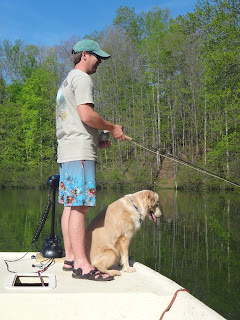Popper season is officially here, and with the Bass spawning in our local lakes and ponds, now is the perfect time to throw your favorite small popper for bluegill. For me, I have special reverence for the Betts Grim Popper.
 |
| The Betts Grim Popper is the perfect beginners popper |
I may be slightly biased towards this popper, since it was the first fly I caught fish with, and have always found it to be my go to "cheater" fly...for when I just want to catch something. The key to this popper is its ease of use. Because of the excellent profile, coloration, and design, this fly is just as effective sitting still as it is in motion. This is all the better when you are learning how to cast. While I was learning, many times I had a fish hitting this popper before I was able to begin a strip retrieve.
The other nice feature of this fly is its overall size to hook ratio. What I mean by this is the hook is set far enough back to ensure most panfish worth catching can be hooked, but the shape of the body and legs helps prevent a small panfish from completely engulfing the fly (granted this can still happen, but I find it occurs a lot less with this fly). After using several other types of poppers, this is a design feature I am grateful for, as I always strive to release the fish as quickly as possible...and remember to crush your barbs!
One thing to remember when fishing poppers, especially those with legs, the fly will have a tendency to spin, which can cause tangles, and lead to a higher frequency of wind knots. Always check your leader and tippet after several casts, and never be afraid to retie. In the end, tippet is always cheaper than poppers.
As for what you may catch...really anything that will take topwater flies will crush this little bug. I have caught countless panfish, and quite a number of largemouth bass with this fly. Fishing this fly close to rocks has lead to many good sized rock bass, and even the occasional crappie. For the bass, short strips of the fly tend to lead to better takes.
Finally, no matter what you read, there is no wrong way to fish a fly, and no fly design that is wrong. The real fun of fishing is to develop your own preferences and styles, and to find what works for you. True, there are some purist who only use those patterns developed 100 years ago, but for me, if it catches a fish, I'll tie it on!
















